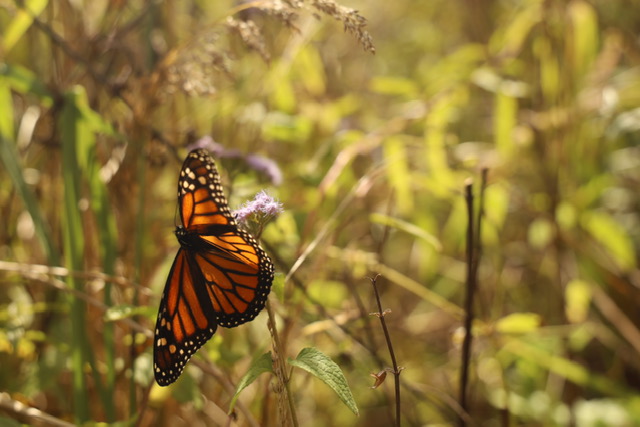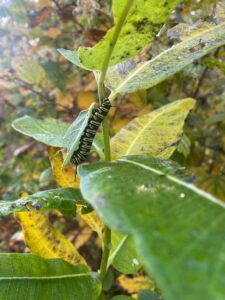
Bursting from a shell
Black, yellow, orange, and white
Beating wings take flight
Butterflies have been the center of countless stories about rebirth and transformation. Kindergarten was filled with pictures of these insects. Adults get them tattooed as symbols of hope, bliss, and love. Butterflies have captured the imaginations of countless generations, yet we have not been the kindest to these muses.
Hi, my name is Jared Henry. Like almost everyone here, I’m majoring in Environmental Studies. However, I also have Political Science under my belt. I possibly want to pursue a Master’s in Public Administration and go into public or environmental finance. This semester I interned at the NC Aquarium on Roanoke Island under the head horticulturalist Rachel Veal. I know, a big departure from my future plans. Going into this semester and over the summer, I talked with Lindsay and Linda about experiencing something new. I have worked in an office environment before, but I was also interested in fieldwork. My only conditions were that it had to work with plants in some way, and it avoided any animal larger than a squirrel. When they told be about the opportunity to work with Rachel in the pollinator garden, it sounded like a perfect fit.

It might seem weird going to an aquarium to work outside with plants and pollinators, but it’s a pretty ingenious idea. Aquariums are already centers of public learning. Plus, cultivating an outside space allows for visitors to gain more experiences and knowledge than they would’ve at a traditional aquarium. My role in this was to conduct citizen science surveys. These initiatives attempt to get large sets of data across vast areas by making survey methods simple and reliable enough for the everyday person to complete. The surveys I completed collected data on bumble bees, monarch eggs and larvae, butterflies, and pollinator flower preferences. Even though these surveys are for citizens, there were many learning curves. Huge parts of these surveys included plant identification, recognizing monarch growth stages, and species identification. Luckily, Rachel was a patient teacher.

Day one I was overwhelmed. My clipboard was stacked with data sheets. All the plants blurred together, and the garden was filled to the brim with buzzing and movement. Now, those all seem like exaggerations. Well, except for all the insects. In fact, I was amazed about how much life was packed into one spot. My family has always had a vegetable garden and I was constantly outside landscaping with my mom, so I’ve seen my fair share of bees, butterflies, and wasps. But I had never seen or heard so many insects in a single area before. I’m not exaggerating when I say I could’ve cried.
Anyways, by the time my internship with Rachel ended, I was able to identify all the fall blooming plants, a lot of butterflies (not the grass skippers though), and the six native bumblebee species. I could tell you that pollinating flies are most attracted to white and yellow flowers because they can’t see red, most bee species don’t form hives, monarchs have five caterpillar growth stages, all the American Asters are now in the genus Symphyotrichum, and countless other facts. At the beginning of the semester, I couldn’t have told you any of this. Outside of the garden, I was able to help add plants to the pollinator habitat at the library in Kill Devil Hills, sell plants to and connect with community members at the Secotan Market, and participate in a beach cleanup.

I greatly admire Rachel and her work at the aquarium. It’s important that as more places become developed, local and migratory pollinators have spots to eat and live. Rachel is providing such a space, and she is encouraging community members to make their own pollinator habitats. It was sad leaving my internship, but I know I will carry on the lessons I have learned and share the knowledge I gained – just ask my mom.
Now, I’ll end this post the same way I began it:
Bursting from a shell
Black, yellow, orange, and white
Beating wings take flight